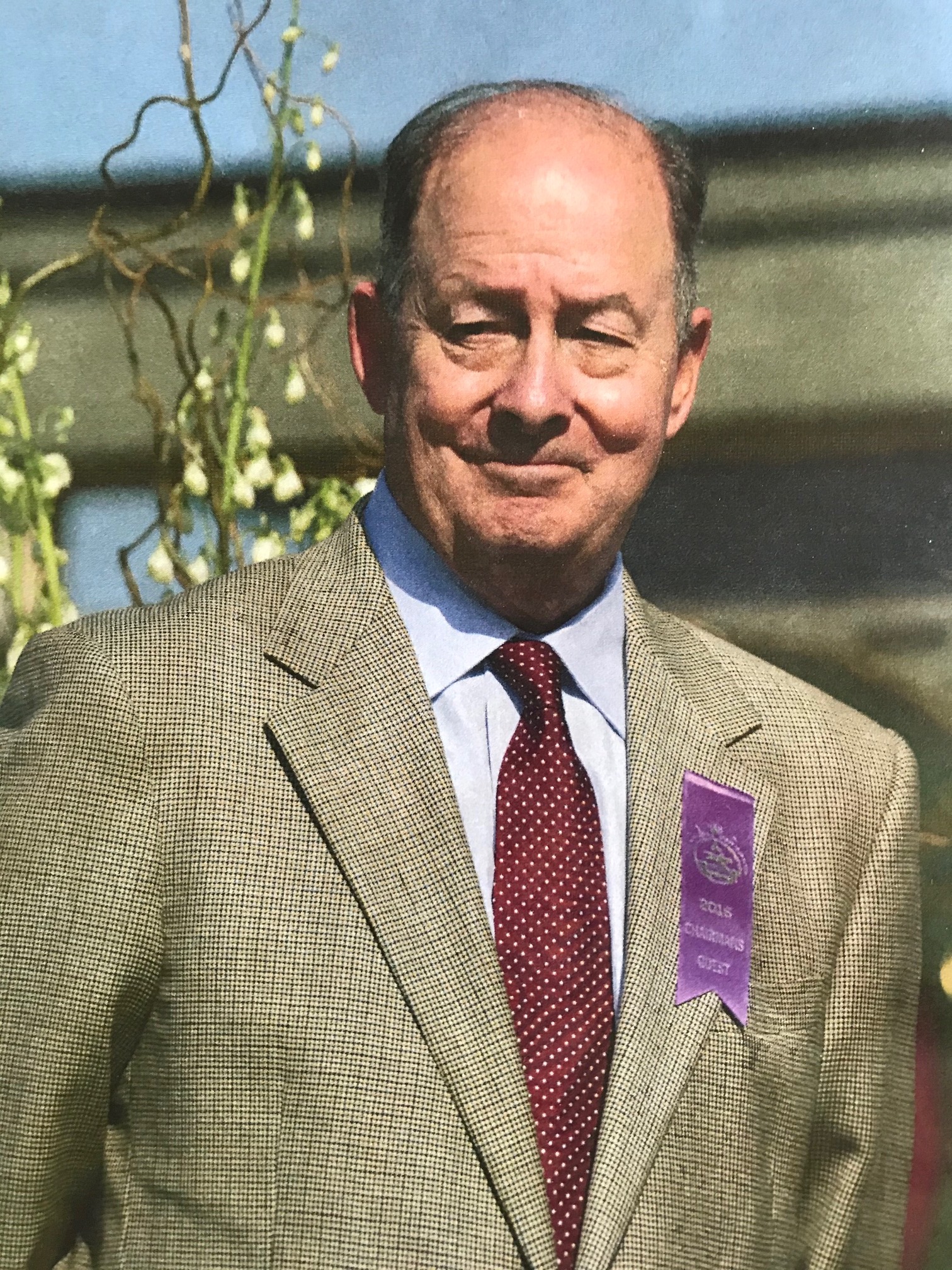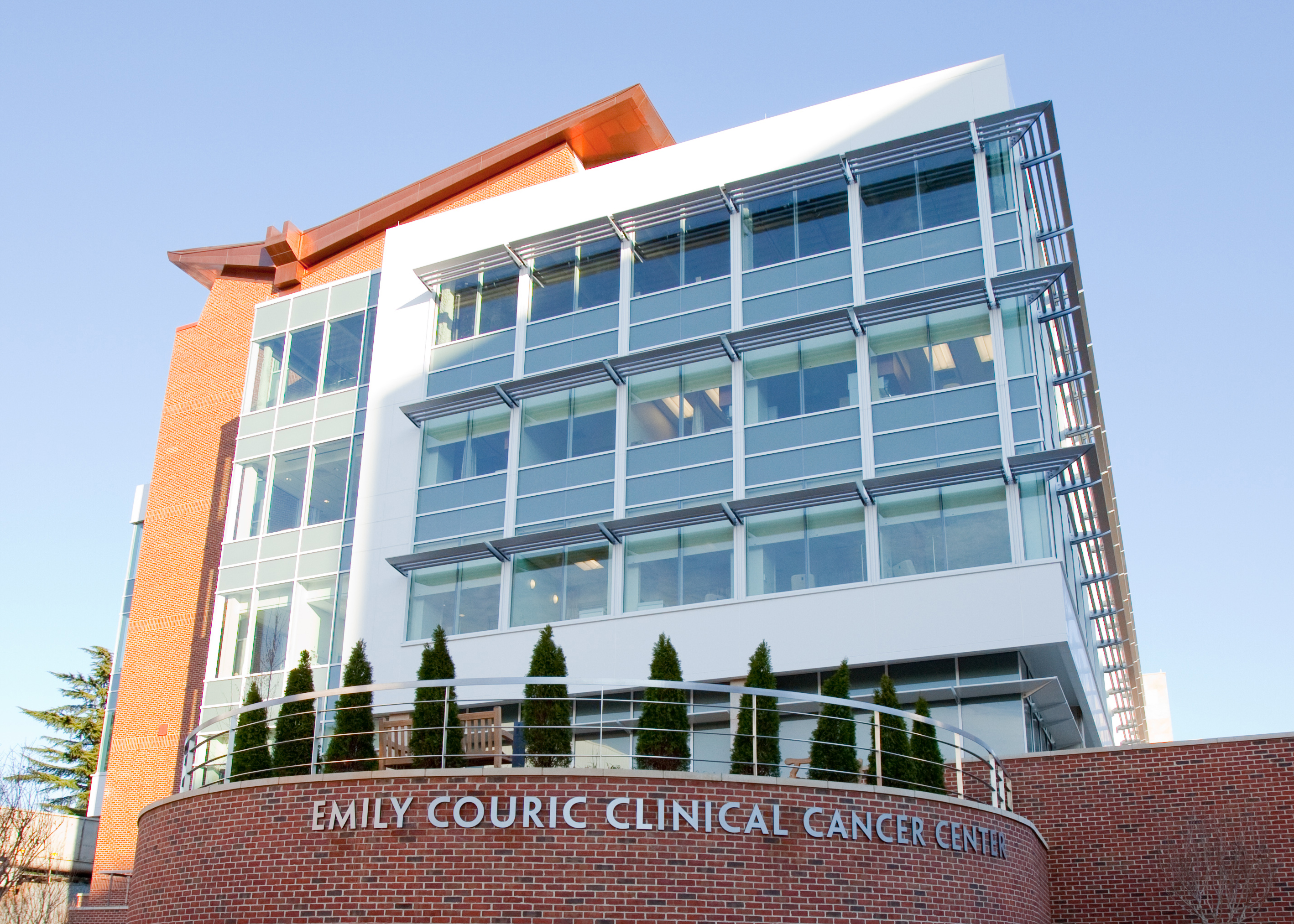Close to Home
“So you live in Charlottesville,” the surgeon said, looking at Daniel Van Clief’s chart. Van Clief, who had been recently diagnosed with prostate cancer, had just arrived at Sibley Memorial Hospital in Washington, D.C. He wasn’t sure what to expect, but he knew that Sibley was part of the Johns Hopkins Health System. He figured he was in the right place.
But what Van Clief heard next came as a surprise.
“The doctor said he would be happy to treat me, but he asked if I’d prefer to drive 10 minutes for care, as opposed to two and a half hours,” Van Clief says. “Once I heard that, the implication was clear: the highest quality care is available right in your backyard.”

As the premier cancer center in the Commonwealth, UVA Cancer Center serves approximately four million people across Virginia, West Virginia, and North Carolina, where patients can travel up to 10 hours to receive the expert care available here. From designing innovative therapies to population health and survivorship efforts, UVA is determined to meet the complex and changing needs of patients and their families.
Since the arrival of UVA Cancer Center Director Dr. Thomas Loughran, Jr., the center has attracted more than 70 new oncologists and investigators and seen a 112% increase in the number of clinical trials available to patients. Why the focus on clinical trials? They move the most promising ideas from the bench to the bedside, Loughran says. “Clinical trials are the final proving ground for new cancer treatments, and sometimes a patient’s last hope,” he explains. “It’s imperative that Virginians have access to the most promising treatments, close to home.”

The surgeon at Sibley suggested that Van Clief see Dr. Tim Showalter, a leading prostate cancer specialist at UVA. Showalter recommended that Van Clief undergo a new surgical procedure developed through clinical trials: high-dose radiation brachytherapy, which involves the insertion of radioactive material directly into a patient’s tissues, allowing for more localized treatment. UVA is one of just a few hospitals in the country offering this advanced approach, which delivers better outcomes, has fewer side effects, and requires less time devoted to daily radiation therapy.
Now this procedure is available to patients at UVA Cancer Center thanks to a landmark clinical trial. “When it comes to expert cancer care, many of the newest and most exciting treatments can only be offered on a clinical trial,” Showalter says.
Showalter and his wife—Dr. Shayna Showalter, a breast cancer surgeon—are investigating other applications for the therapy. Together, the couple has developed a new treatment for breast cancer called Precision Breast IORT (intraoperative radiation therapy). Using brachytherapy, the procedure allows for the compression of weeks of radiation treatments into a single, powerful dose that is both highly targeted and personalized to each recipient.
The carefully honed knowledge of physician-scientists working at the forefront of their fields is critical to developing such trials—and to offering top-notch care, Shayna Showalter points out. “All I do all day, every day is breast cancer. Whereas if you go somewhere else, you might read a mammogram and the next minute you’re looking at a CAT scan to rule out appendicitis,” she says. At the same time, the center’s intimate and collaborative setting allows experts to share information and make individualized recommendations. “We’re always talking about the best clinical trials that might be available for each patient,” she says.
“The level of expertise here is really unparalleled,” Tim Showalter adds. To take advantage of this strength, UVA Cancer Center is accelerating the translation of novel ideas into clinical studies that will benefit a growing number of future patients.
Two years later, Van Clief, who runs a small timber farm on his property, says his life has returned to normal. Mornings find him wading through the underbrush to check on his pine trees. “I’m definitely a beneficiary of the scientific expertise at UVA,” he says. “It makes you thankful that this kind of treatment is available, because there very easily could have been a different outcome.”
For Cancer Center doctors like the Showalters, who are frequently stopped on the street or in the grocery store by former patients, that kind of gratitude is what makes the work worthwhile. “We get a lot of people telling us, ‘Thanks for doing this trial,’” Tim Showalter says. “I love being at a place where we can both serve patient needs and continue to push the field forward.”

